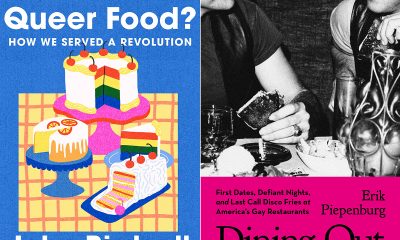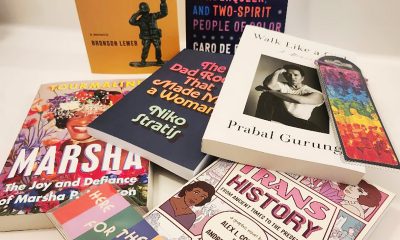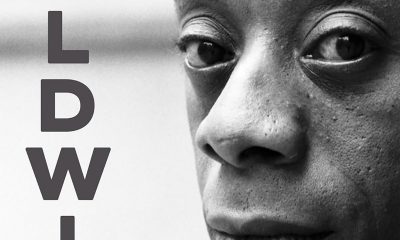a&e features
Queer literary lion Edmund White not slowing down at age 83
New novel ‘Humble Lover’ features sex, unrequited passion, and ballet
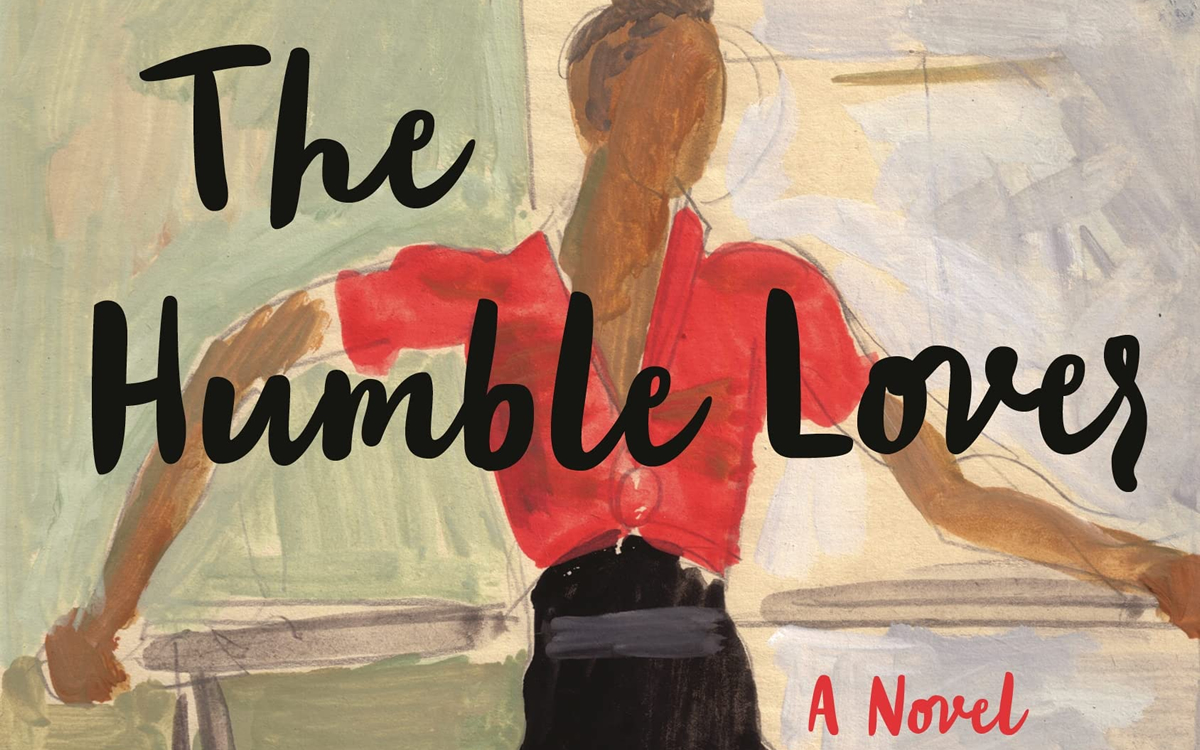
“It’s remarkable,” Edmund White, the acclaimed queer novelist memoirist, playwright, biographer and essayist, told the Blade this summer in a telephone interview, “I’m 83 years old! A lot of people my age would give up.”
“Not me,” he added, “I still feel sharp.”
White, born in 1940, is more than as good as his word. At a time of life when many rest on their laurels, he has not only published his latest novel, “The Humble Lover,” (Bloomsbury), but is working on new literary projects.

Don’t be fooled by White’s age. “The Humble Lover” is no sleepy, “octogenarian” novel. Yes, its protagonist, Aldwych West, who’s desperately in love with 20-year-old August Dupond, a principal dancer in the New York City Ballet, sleeps. But that’s all “The Humble Lover” has in common with staid novels for “the elderly.” The novel features lots of sex, unrequited passion, ballet, Champagne, and Ernestine, a dominatrix, who makes Joan Crawford or Bette Davis at their bitchiest seem tame. August doesn’t return Aldwych’s affections. In an effort to spike August’s interest, Aldwych, who’s incredibly wealthy, creates a ballet company so August can have his own ballet troupe to star in. Poor Aldwych! August still doesn’t lust for him. Instead, he hooks up with Padro, a sex worker, and Ernestine, who’s married to his investment banker nephew Bryce. It’s deliciously wicked.
“Why don’t they have more gay villains,” White said, “I liked writing Ernestine. She’s a real bitch!”
“The Humble Lover” is one of the more than 30 novels that White has written. To say that White, who grew up in Evanston, Ill., has had a creative and productive life is an understatement. White, who lives in New York, was a co-founder of the Gay Men’s Health Crisis and of the 1980s queer writers group The Violet Quill. In addition to his many novels, he has written memoirs, essay collections, book reviews as well as biographies of Rimbaud, Genet, and Proust. White wrote a novel (unpublished) when he was a teen at Cranbrook School, a boarding school in Broomfield Hills, Mich.
White has received more honors than you could imagine. His many awards include the PEN/Saul Bellow Award for Career Achievement in American Fiction and Lambda Literary’s Visionary Award.
The National Book Foundation presented White with the 2019 Medal for Distinguished Contribution to American Letters. “A master of narrative and craft across fiction, journalism, memoir and more,” David Steinberger, chair of the board of directors of the Foundation said of White. “Whether it’s evocative depiction of gay life during the tumultuous 1980s, painstakingly researched biography or elegant memoir, White’s work stands out across decades as its resonance … for a multitude of devoted readers.”
Along with being a legendary queer literary lion, White is professor emeritus of creative writing at Princeton. (He taught at Princeton for 19 years.) White has been called the “godfather of gay American literature,” Princeton Alumni Weekly has reported.
In 2013, White and the writer Michael Carroll, who is 25 years younger than White, were married. White has lived much of his life in New York and Paris.
From early on, White was imaginative. As a child, White, like many writers thought up stories and had imaginary friends. “One of my imaginary friends was named Cottage Cheese,” White said.
Today, White is one of the most out, unabashedly, joyfully queer people you’d ever want to meet. “I’m working now on a sex memoir about the loves of my life,” White, who in 1977 co-wrote with Charles Silverstein, “The Joy of Gay Sex,” said.
“It’s so much more sex positive now,” he added.
But when White grew up in the Midwest in the 1940s and 1950s, there was nothing sex positive about being queer. Being gay was sinful and illegal. At best, it was believed to be a sickness. In that era, “the three most heinous things in America were heroin, communism and homosexuality,” White wrote in an essay.
White knew he was queer early on (even though he secretly perused the dictionary to find words for his feelings).
In his 2018 memoir “Unpunished Vice: A Life of Reading,“ White recounts that, when he was 12, his mother gave him a biography of Nijinsky, the queer Russian ballet dancer. “Was it just that he was an iconic artist…and she wanted to stoke my artistic fires,” he writes, “Or was it innocent compliance with a sissy streak I’d already manifested?”
When he was a teen and underage, men would come by, cruising, in their cars. He’d have sex with them. But, “I was jailbait,” White said, “they’d never meet me a second time.”
White always wanted to be a writer. “But, I knew writers can’t support themselves,” White said, “so I thought, maybe I’ll be a professor.”
At boarding school, White’s favorite teacher had studied Chinese. White decided to follow in his footsteps. In 1962, he graduated from the University of Michigan, where he studied Chinese. White was accepted into Harvard University’s doctoral program in Chinese. But he decided against entering the program. He opted to follow a lover and move to New York.
For several years, he pursued journalism. Working for Time-Life Books, freelancing for Newsweek, editing the Saturday Review and Horizon as well as freelancing for publications such as The New Republic.
White is best known for his trio of autobiographical novels: “A Boy’s Own Story,” “The Beautiful Room Is Empty” and “The Farewell Symphony.”
But not all of his fiction, especially, his most recent novels (such as “A Previous Life” and “A Saint from Texas”) are about his life.
“I got tired of writing autobiographical fiction,” White said, “I enjoy making people up.”
White talked enthusiastically about creating “The Humble Lover.” “When I was in my 20s, I had an affair with a well-known ballet dancer,” White said, “and I’ve always been fascinated by the ballet.”
His fascination with ballet and his acquaintanceship with wealthy, WASPy people helped him to imagine the characters in “The Humble Lover.”
“I had an office mate who was the ultimate WASP from a good family in New York City,” White said. “They had their own brownstone. He’d gone to Harvard. He had a way of pronouncing words that was different from anybody else.”
White, like an anthropologist, studied him. “He became the basis for Aldwych,” White said.
Part of writing for White is finding characters equivalent to people in your life. “When I worked for Vogue magazine, I met a lot of society people,” he said. “They interest me in an anthropological way.”
“I had a boyfriend who was on the best-dressed list,” White added, “these jet set people talk all the time about their schedules.”
At the same time, White thinks people spend too much time thinking about celebrities. “They’re not that interesting,” he said.
In addition to working on a memoir about sex, White is writing a new novel. The novel, White said, is based on his nephew who killed himself at age 50. “It was 10 years ago. He was hetero and lived with me for a little bit,” White said. “He was a little bit crazy. He wouldn’t stay on lithium. I was very close to him.”
“I’ve always wondered if I could find a way to do it,” White added.
Before Stonewall, queer writers would try to explain LGBTQ people to readers. “Or they would try to get compassion for gays and present us as sick in sad stories,” White said. “Or, as in Gore Vidal’s case, they’d show us as campy.”
It’s very different, today. “It’s sex positive.” White said.
The Blade may receive commissions from qualifying purchases made via this post.
a&e features
Visit Cambridge, a ‘beautiful secret’ on Maryland’s Eastern Shore
New organization promotes town’s welcoming vibe, LGBTQ inclusion
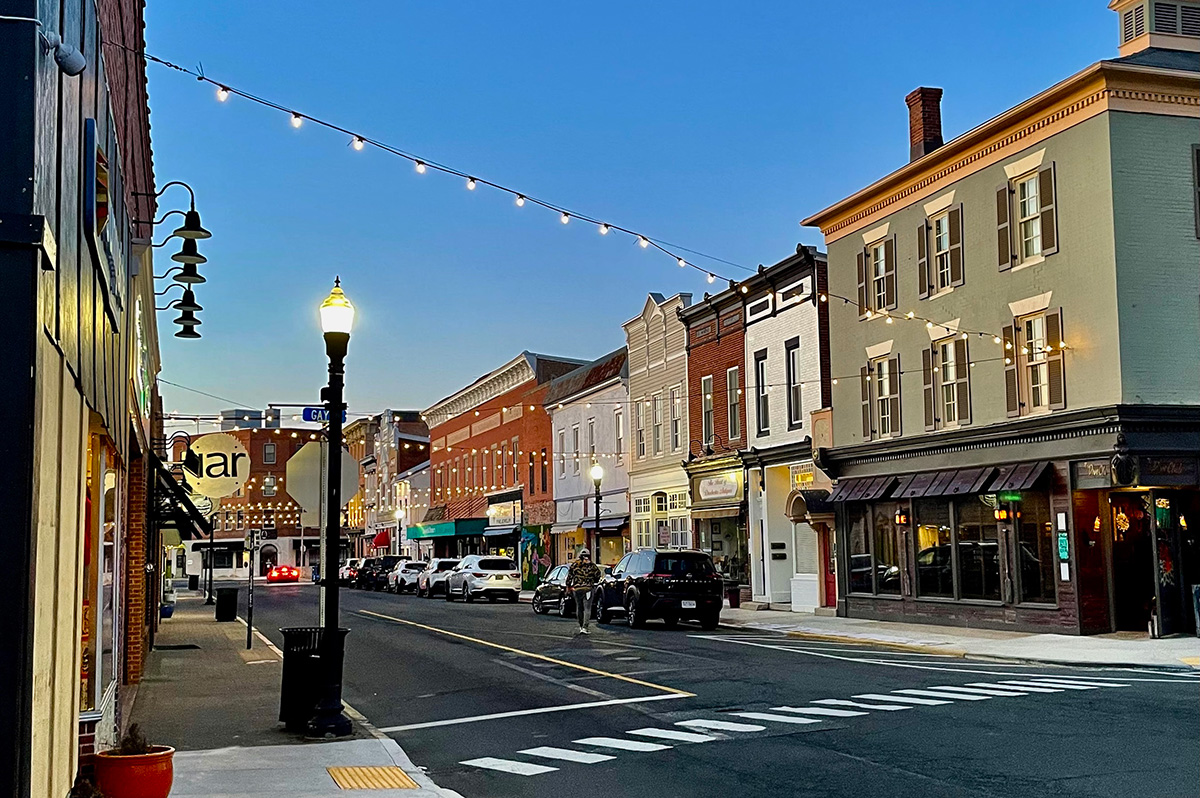
CAMBRIDGE, Md. — Driving through this scenic, historic town on Maryland’s Eastern Shore, you’ll be charmed by streets lined with unique shops, restaurants, and beautifully restored Victorian homes. You’ll also be struck by the number of LGBTQ Pride flags flying throughout the town.
The flags are a reassuring signal that everyone is welcome here, despite the town’s location in ruby red Dorchester County, which voted for Donald Trump over Kamala Harris by a lopsided margin. But don’t let that deter you from visiting. A new organization, Proudly Cambridge, is holding its debut Pride event this weekend, touting the town’s welcoming, inclusive culture.
“We stumbled on a beautiful secret and we wanted to help get the word out,” said James Lumalcuri of the effort to create Proudly Cambridge.
The organization celebrates diversity, enhances public spaces, and seeks to uplift all that Cambridge has to share, according to its mission statement, under the tagline “You Belong Here.”
The group has so far held informal movie nights and a picnic and garden party; the launch party is June 28 at the Cambridge Yacht Club, which will feature a Pride celebration and tea dance. The event’s 75 tickets sold out quickly and proceeds benefit DoCo Pride.
“Tickets went faster than we imagined and we’re bummed we can’t welcome everyone who wanted to come,” Lumalcuri said, adding that organizers plan to make “Cheers on the Choptank” an annual event with added capacity next year.
One of the group’s first projects was to distribute free Pride flags to anyone who requested one and the result is a visually striking display of a large number of flags flying all over town. Up next: Proudly Cambridge plans to roll out a program offering affirming businesses rainbow crab stickers to show their inclusiveness and LGBTQ support. The group also wants to engage with potential visitors and homebuyers.
“We want to spread the word outside of Cambridge — in D.C. and Baltimore — who don’t know about Cambridge,” Lumalcuri said. “We want them to come and know we are a safe haven. You can exist here and feel comfortable and supported by neighbors in a way that we didn’t anticipate when we moved here.”
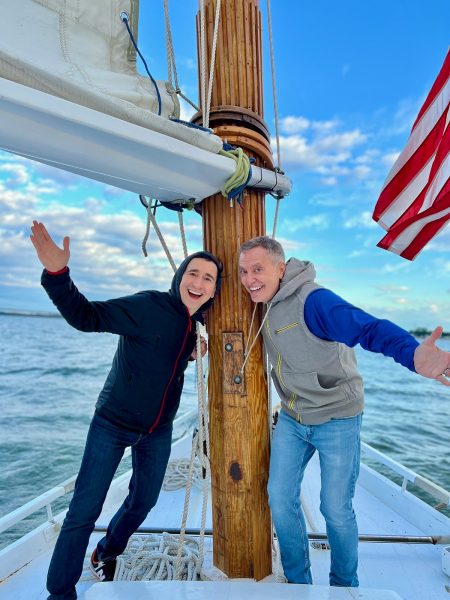
Lumalcuri, 53, a federal government employee, and his husband, Lou Cardenas, 62, a Realtor, purchased a Victorian house in Cambridge in 2021 and embarked on an extensive renovation. The couple also owns a home in Adams Morgan in D.C.
“We saw the opportunity here and wanted to share it with others,” Cardenas said. “There’s lots of housing inventory in the $300-400,000 range … we’re not here to gentrify people out of town because a lot of these homes are just empty and need to be fixed up and we’re happy to be a part of that.”
Lumalcuri was talking with friends one Sunday last year at the gazebo (affectionately known as the “gayzebo” by locals) at the Yacht Club and the idea for Proudly Cambridge was born. The founding board members are Lumalcuri, Corey van Vlymen, Brian Orjuela, Lauren Mross, and Caleb Holland. The group is currently working toward forming a 501(c)3.
“We need visibility and support for those who need it,” Mross said. “We started making lists of what we wanted to do and the five of us ran with it. We started meeting weekly and solidified what we wanted to do.”
Mross, 50, a brand strategist and web designer, moved to Cambridge from Atlanta with her wife three years ago. They knew they wanted to be near the water and farther north and began researching their options when they discovered Cambridge.
“I had not heard of Cambridge but the location seemed perfect,” she said. “I pointed on a map and said this is where we’re going to move.”
The couple packed up, bought a camper trailer and parked it in different campsites but kept coming back to Cambridge.
“I didn’t know how right it was until we moved here,” she said. “It’s the most welcoming place … there’s an energy vortex here – how did so many cool, progressive people end up in one place?”
Corey van Vlymen and his husband live in D.C. and were looking for a second home. They considered Lost River, W.Va., but decided they preferred to be on the water.
“We looked at a map on both sides of the bay and came to Cambridge on a Saturday and bought a house that day,” said van Vlymen, 39, a senior scientist at Booz Allen Hamilton. They’ve owned in Cambridge for two years.
They were drawn to Cambridge due to its location on the water, the affordable housing inventory, and its proximity to D.C.; it’s about an hour and 20 minutes away.
Now, through the work of Proudly Cambridge, they hope to highlight the town’s many attributes to residents and visitors alike.
“Something we all agree on is there’s a perception problem for Cambridge and a lack of awareness,” van Vlymen said. “If you tell someone you’re going to Cambridge, chances are they think, ‘England or Massachusetts?’”
He cited the affordability and the opportunity to save older, historic homes as a big draw for buyers.
“It’s all about celebrating all the things that make Cambridge great,” Mross added. “Our monthly social events are joyful and celebratory.” A recent game night drew about 70 people.
She noted that the goal is not to gentrify the town and push longtime residents out, but to uplift all the people who are already there while welcoming new visitors and future residents.
They also noted that Proudly Cambridge does not seek to supplant existing Pride-focused organizations. Dorchester County Pride organizes countywide Pride events and Delmarva Pride was held in nearby Easton two weeks ago.
“We celebrate all diversity but are gay powered and gay led,” Mross noted.
To learn more about Proudly Cambridge, visit the group on Facebook and Instagram.
What to see and do
Cambridge, located 13 miles up the Choptank River from the Chesapeake Bay, has a population of roughly 15,000. It was settled in 1684 and named for the English university town in 1686. It is home to the Harriet Tubman Museum, mural, and monument. Its proximity to the Blackwater National Wildlife Refuge makes it a popular stop for birders, drawn to more than 27,000 acres of marshland dubbed “the Everglades of the north.”
The refuge is walkable, bikeable, and driveable, making it an accessible attraction for all. There are kayaking and biking tours through Blackwater Adventures (blackwateradventuresmd.com).
Back in town, take a stroll along the water and through historic downtown and admire the architecture. Take in the striking Harriet Tubman mural (424 Race St.). Shop in the many local boutiques, and don’t miss the gay-owned Shorelife Home and Gifts (421 Race St.), filled with stylish coastal décor items.
Stop for breakfast or lunch at Black Water Bakery (429 Race St.), which offers a full compliment of coffee drinks along with a build-your-own mimosa bar and a full menu of creative cocktails.
The Cambridge Yacht Club (1 Mill St.) is always bustling but you need to be a member to get in. Snapper’s on the water is temporarily closed for renovations. RaR Brewing (rarbrewing.com) is popular for craft beers served in an 80-year-old former pool hall and bowling alley. The menu offers burgers, wings, and other bar fare.
For dinner or wine, don’t miss the fantastic Vintage 414 (414 Race St.), which offers lunch, dinner, wine tasting events, specialty foods, and a large selection of wines. The homemade cheddar crackers, inventive flatbreads, and creative desserts (citrus olive oil cake, carrot cake trifle) were a hit on a recent visit.
Also nearby is Ava’s (305 High St.), a regional chain offering outstanding Italian dishes, pizzas, and more.
For something off the beaten path, visit Emily’s Produce (22143 Church Creek Rd.) for its nursery, produce, and prepared meals.
“Ten minutes into the sticks there’s a place called Emily’s Produce, where you can pay $5 and walk through a field and pick sunflowers, blueberries, you can feed the goats … and they have great food,” van Vlymen said.
As for accommodations, there’s the Hyatt Regency Chesapeake Bay (100 Heron Blvd. at Route 50), a resort complex with golf course, spa, and marina. Otherwise, check out Airbnb and VRBO for short-term rentals closer to downtown.
Its proximity to D.C. and Baltimore makes Cambridge an ideal weekend getaway. The large LGBTQ population is welcoming and they are happy to talk up their town and show you around.
“There’s a closeness among the neighbors that I wasn’t feeling in D.C.,” Lumalcuri said. “We look after each other.”
a&e features
James Baldwin bio shows how much of his life is revealed in his work
‘A Love Story’ is first major book on acclaimed author’s life in 30 years
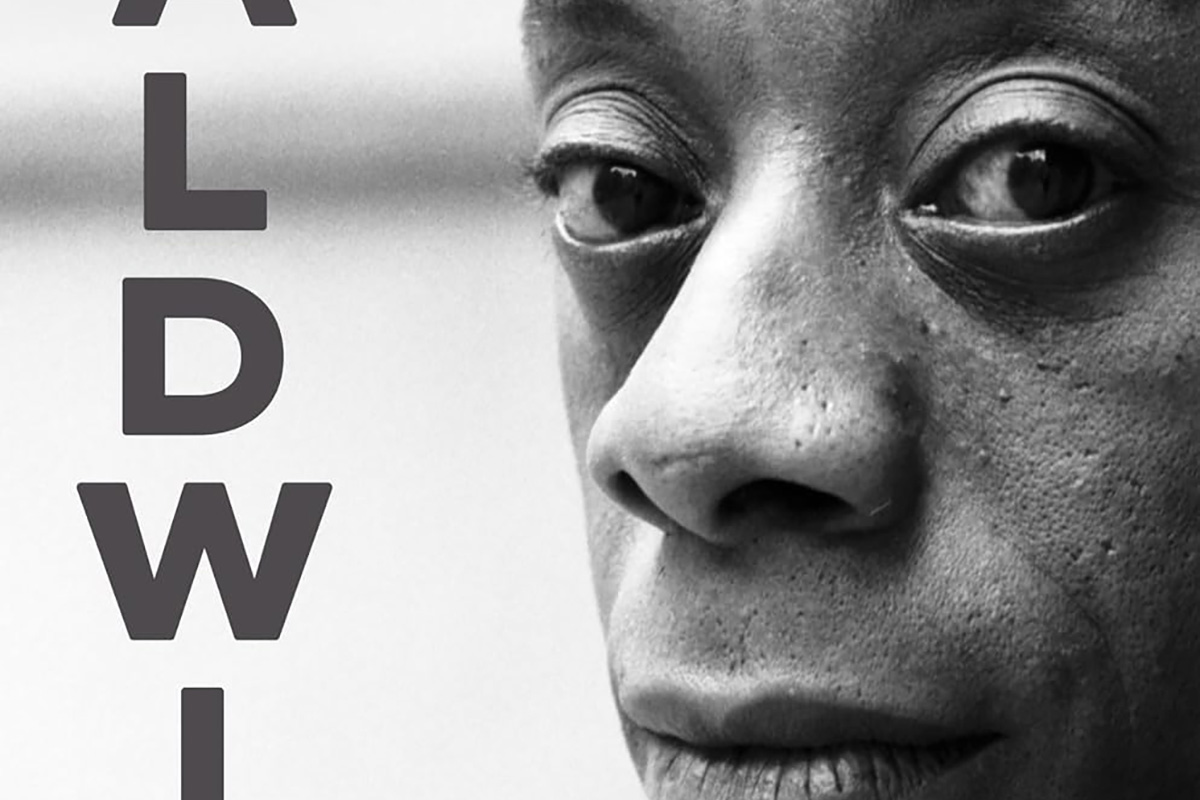
‘Baldwin: A Love Story’
By Nicholas Boggs
c.2025, FSG
$35/704 pages
“Baldwin: A Love Story” is a sympathetic biography, the first major one in 30 years, of acclaimed Black gay writer James Baldwin. Drawing on Baldwin’s fiction, essays, and letters, Nicolas Boggs, a white writer who rediscovered and co-edited a new edition of a long-lost Baldwin book, explores Baldwin’s life and work through focusing on his lovers, mentors, and inspirations.
The book begins with a quick look at Baldwin’s childhood in Harlem, and his difficult relationship with his religious, angry stepfather. Baldwin’s experience with Orilla Miller, a white teacher who encouraged the boy’s writing and took him to plays and movies, even against his father’s wishes, helped shape his life and tempered his feelings toward white people. When Baldwin later joined a church and became a child preacher, though, he felt conflicted between academic success and religious demands, even denouncing Miller at one point. In a fascinating late essay, Baldwin also described his teenage sexual relationship with a mobster, who showed him off in public.
Baldwin’s romantic life was complicated, as he preferred men who were not outwardly gay. Indeed, many would marry women and have children while also involved with Baldwin. Still, they would often remain friends and enabled Baldwin’s work. Lucien Happersberger, who met Baldwin while both were living in Paris, sent him to a Swiss village, where he wrote his first novel, “Go Tell It on the Mountain,” as well as an essay, “Stranger in the Village,” about the oddness of being the first Black person many villagers had ever seen. Baldwin met Turkish actor Engin Cezzar in New York at the Actors’ Studio; Baldwin later spent time in Istanbul with Cezzar and his wife, finishing “Another Country” and directing a controversial play about Turkish prisoners that depicted sexuality and gender.
Baldwin collaborated with French artist Yoran Cazac on a children’s book, which later vanished. Boggs writes of his excitement about coming across this book while a student at Yale and how he later interviewed Cazac and his wife while also republishing the book. Baldwin also had many tumultuous sexual relationships with young men whom he tried to mentor and shape, most of which led to drama and despair.
The book carefully examines Baldwin’s development as a writer. “Go Tell It on the Mountain” draws heavily on his early life, giving subtle signs of the main character John’s sexuality, while “Giovanni’s Room” bravely and openly shows a homosexual relationship, highly controversial at the time. “If Beale Street Could Talk” features a woman as its main character and narrator, the first time Baldwin wrote fully through a woman’s perspective. His essays feel deeply personal, even if they do not reveal everything; Lucian is the unnamed visiting friend in one who the police briefly detained along with Baldwin. He found New York too distracting to write, spending his time there with friends and family or on business. He was close friends with modernist painter Beauford Delaney, also gay, who helped Baldwin see that a Black man could thrive as an artist. Delaney would later move to France, staying near Baldwin’s home.
An epilogue has Boggs writing about encountering Baldwin’s work as one of the few white students in a majority-Black school. It helpfully reminds us that Baldwin connects to all who feel different, no matter their race, sexuality, gender, or class. A well-written, easy-flowing biography, with many excerpts from Baldwin’s writing, it shows how much of his life is revealed in his work. Let’s hope it encourages reading the work, either again or for the first time.
a&e features
Looking back at 50 years of Pride in D.C
Washington Blade’s unique archives chronicle highs, lows of our movement
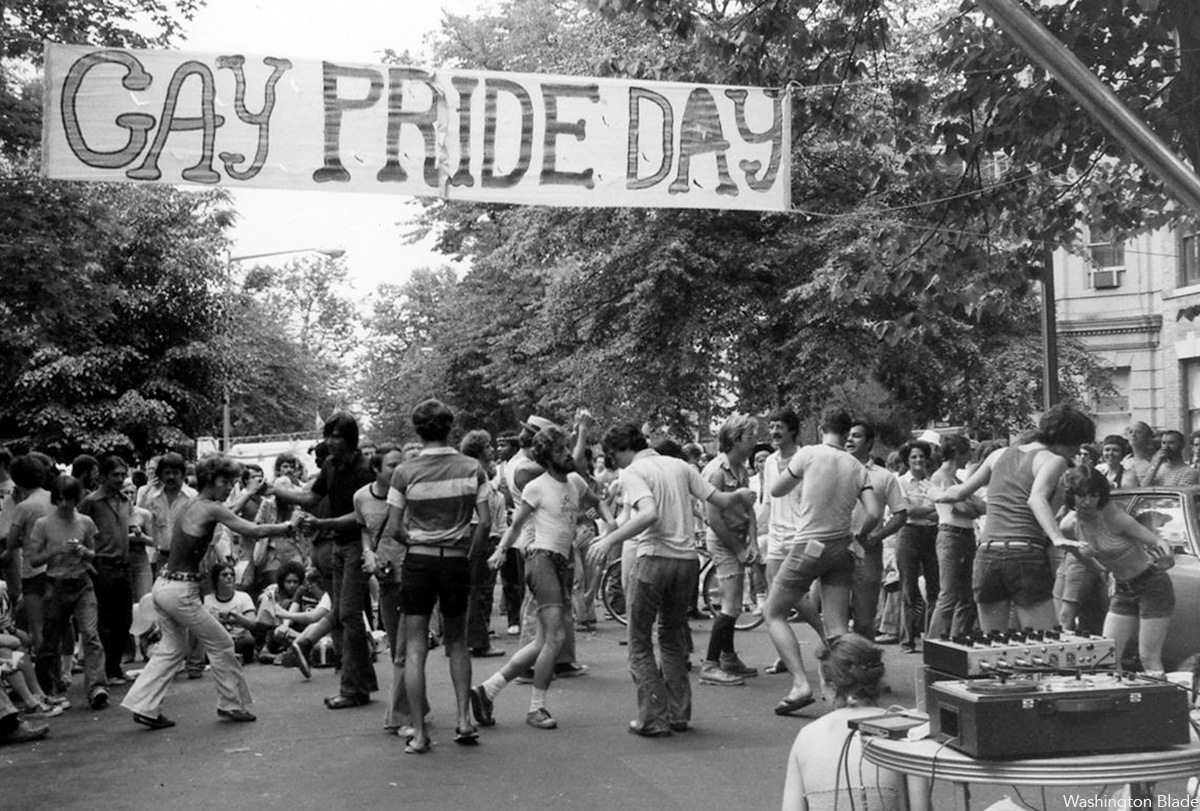
To celebrate the 50th anniversary of LGBTQ Pride in Washington, D.C., the Washington Blade team combed our archives and put together a glossy magazine showcasing five decades of celebrations in the city. Below is a sampling of images from the magazine but be sure to find a print copy starting this week.
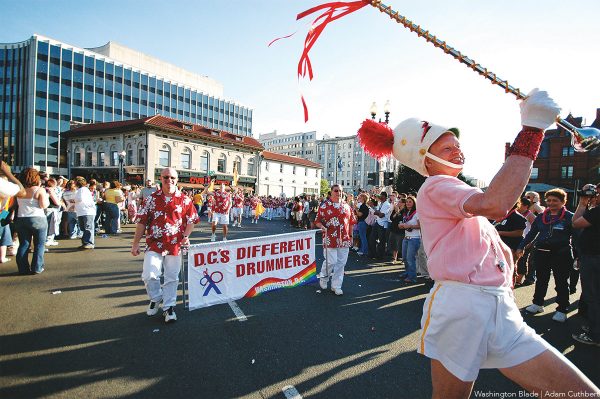
The magazine is being distributed now and is complimentary. You can find copies at LGBTQ bars and restaurants across the city. Or visit the Blade booth at the Pride festival on June 7 and 8 where we will distribute copies.
Thank you to our advertisers and sponsors, whose support has enabled us to distribute the magazine free of charge. And thanks to our dedicated team at the Blade, especially Photo Editor Michael Key, who spent many hours searching the archives for the best images, many of which are unique to the Blade and cannot be found elsewhere. And thanks to our dynamic production team of Meaghan Juba, who designed the magazine, and Phil Rockstroh who managed the process. Stephen Rutgers and Brian Pitts handled sales and marketing and staff writers Lou Chibbaro Jr., Christopher Kane, Michael K. Lavers, Joe Reberkenny along with freelancer and former Blade staffer Joey DiGuglielmo wrote the essays.
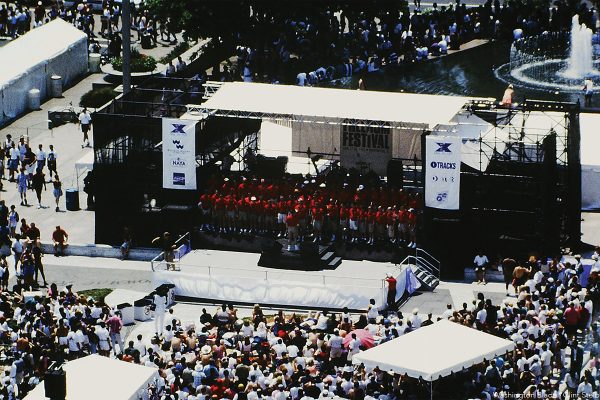
The magazine represents more than 50 years of hard work by countless reporters, editors, advertising sales reps, photographers, and other media professionals who have brought you the Washington Blade since 1969.
We hope you enjoy the magazine and keep it as a reminder of all the many ups and downs our local LGBTQ community has experienced over the past 50 years.
I hope you will consider supporting our vital mission by becoming a Blade member today. At a time when reliable, accurate LGBTQ news is more essential than ever, your contribution helps make it possible. With a monthly gift starting at just $7, you’ll ensure that the Blade remains a trusted, free resource for the community — now and for years to come. Click here to help fund LGBTQ journalism.
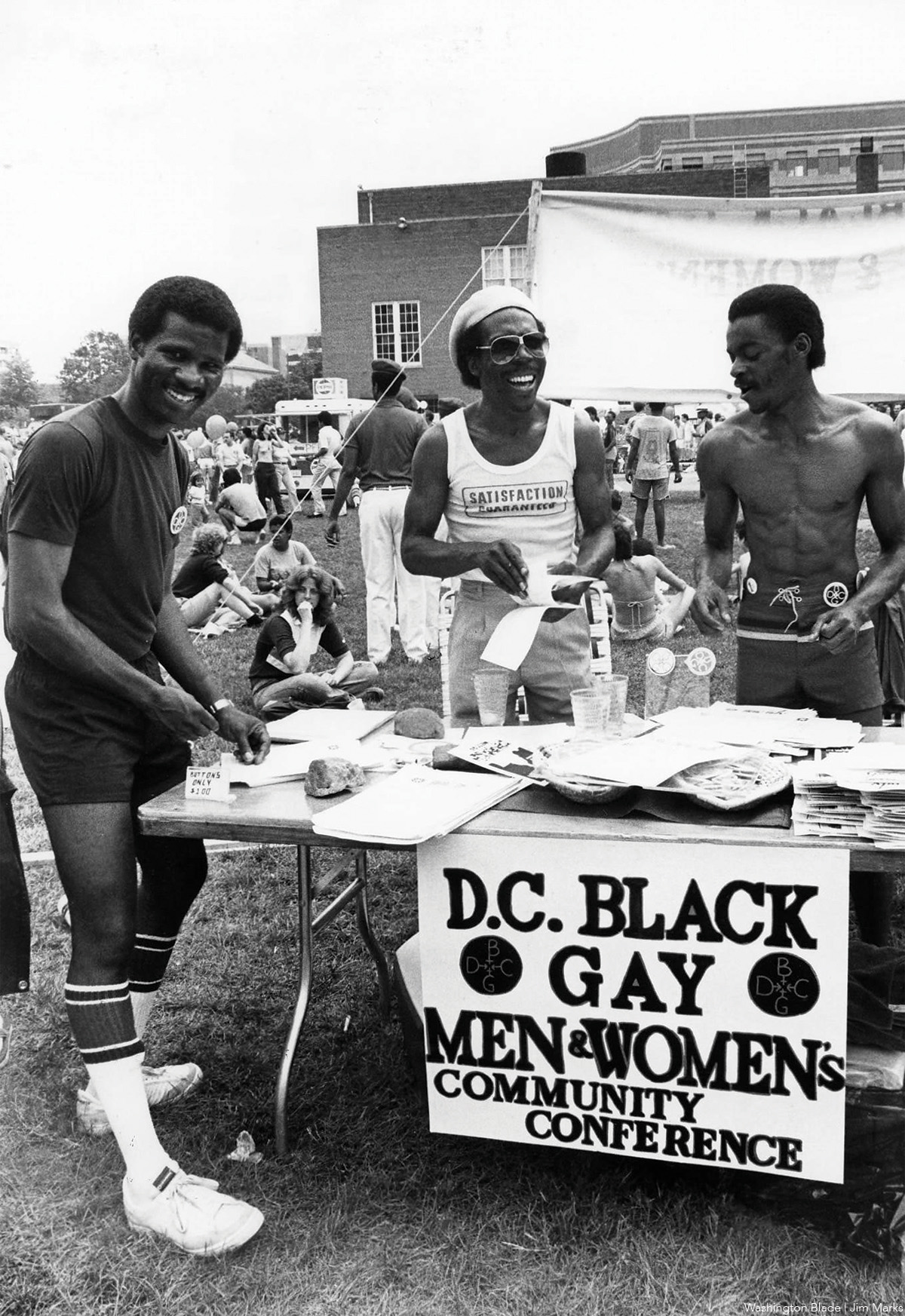
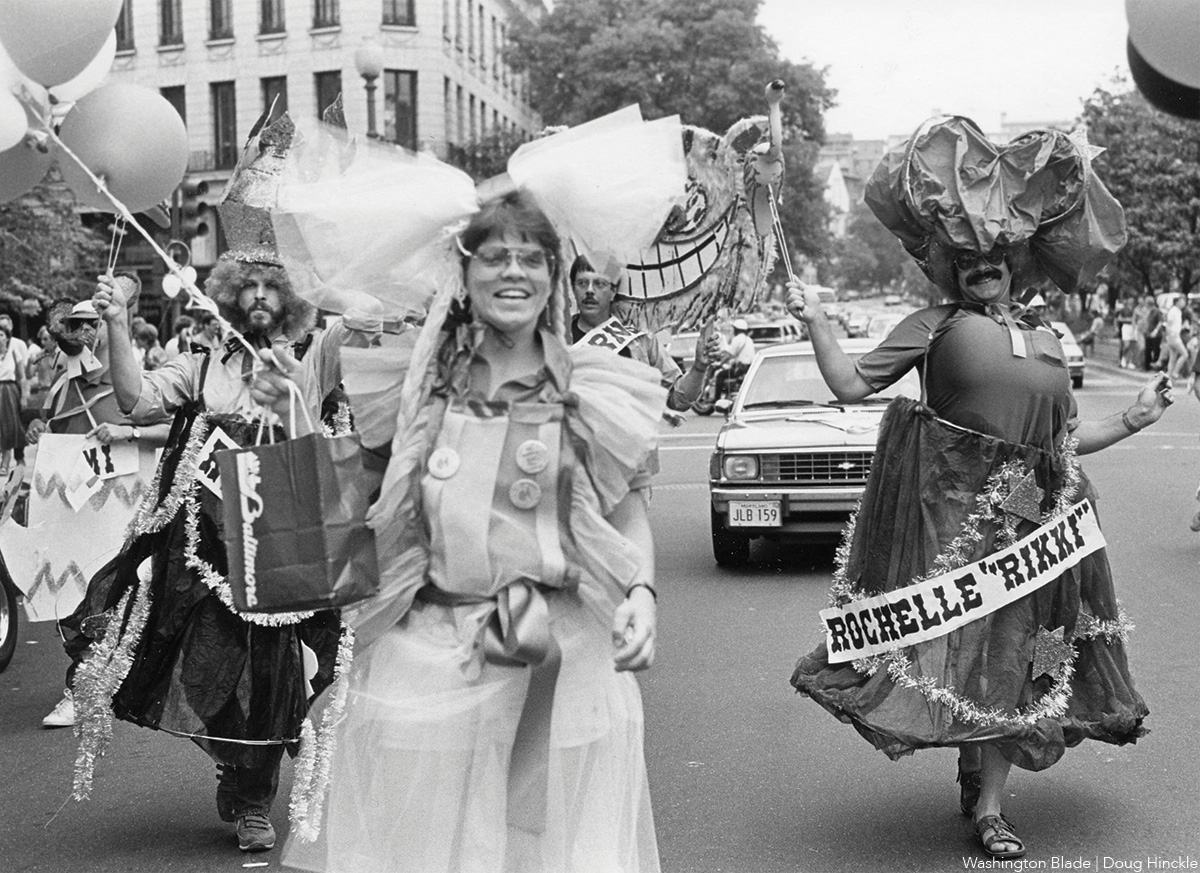
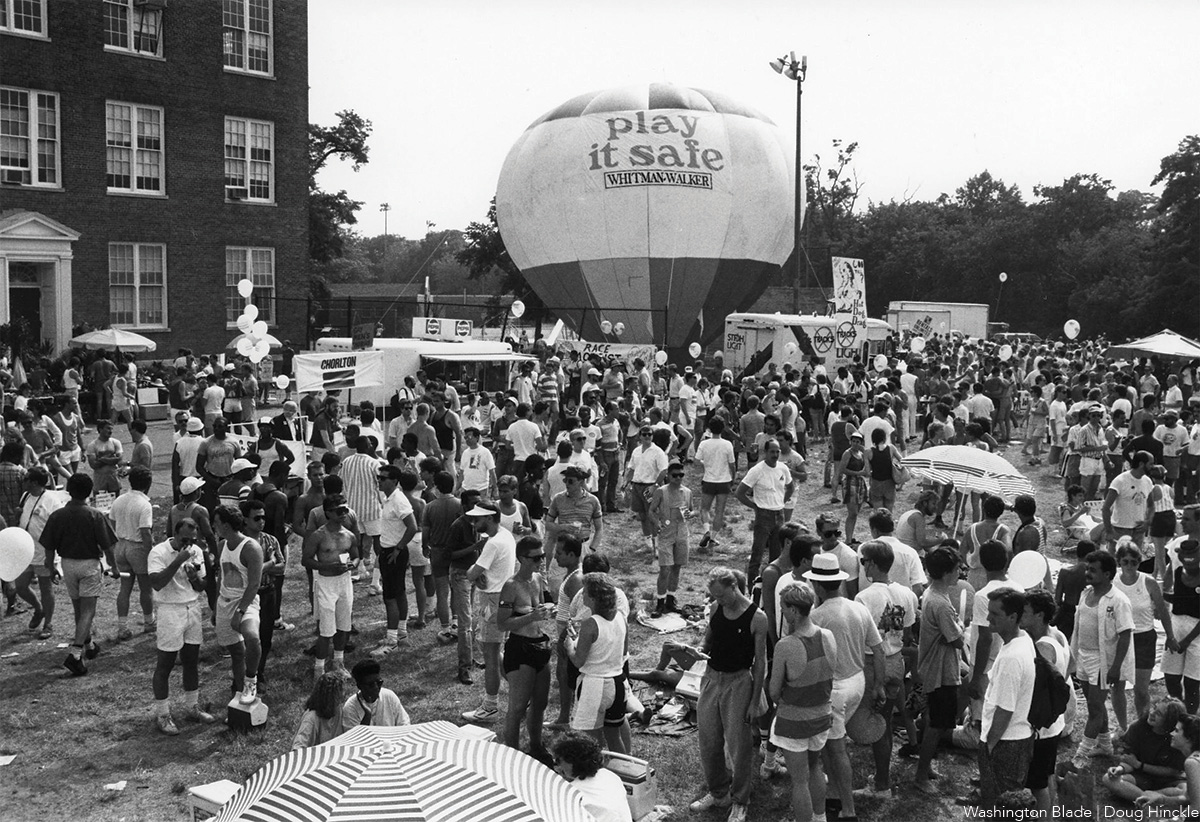
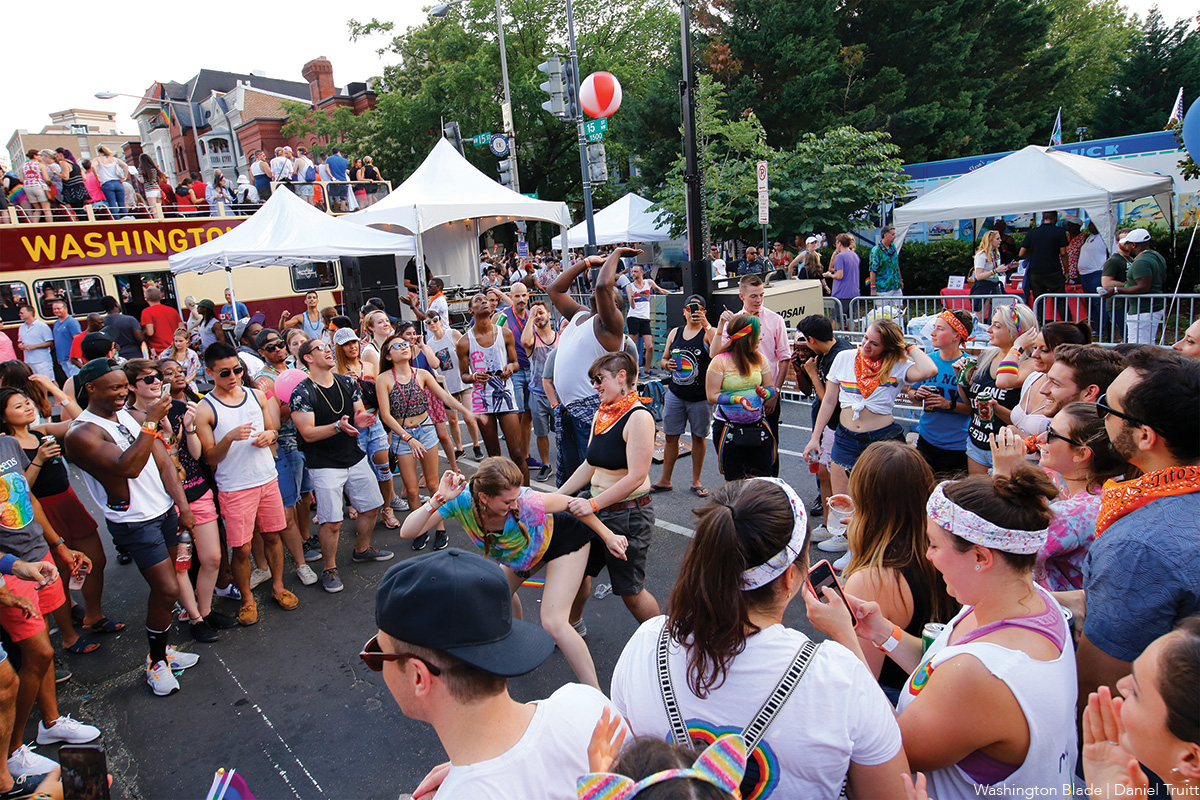
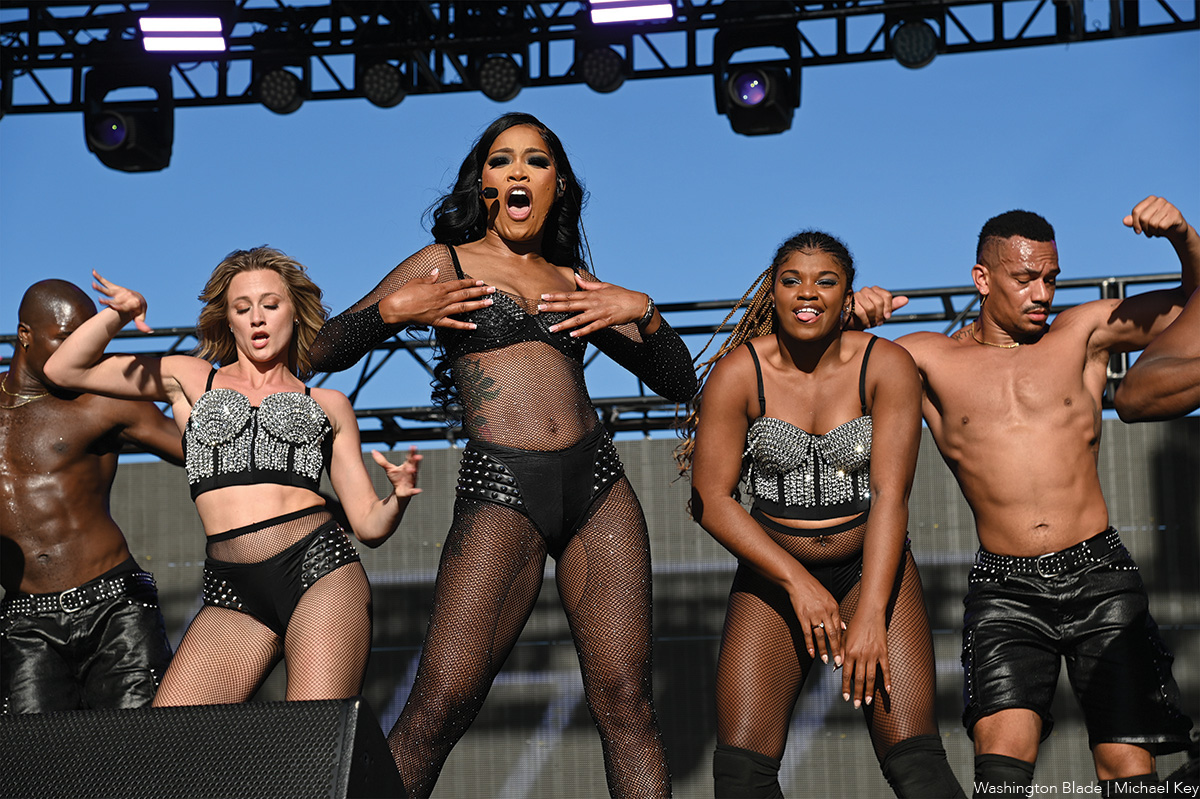
-
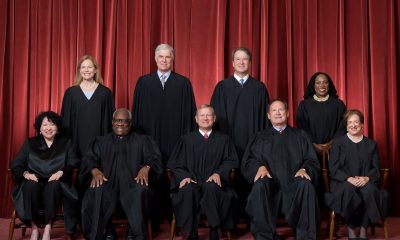
 U.S. Supreme Court4 days ago
U.S. Supreme Court4 days agoSupreme Court upholds ACA rule that makes PrEP, other preventative care free
-

 U.S. Supreme Court4 days ago
U.S. Supreme Court4 days agoSupreme Court rules parents must have option to opt children out of LGBTQ-specific lessons
-
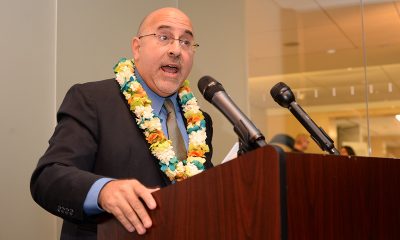
 National5 days ago
National5 days agoEvan Wolfson on the 10-year legacy of marriage equality
-
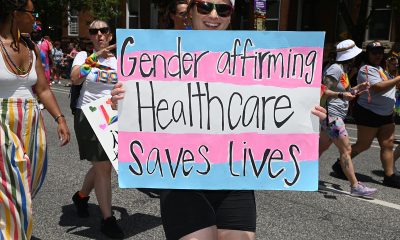
 Congress5 days ago
Congress5 days agoSenate parliamentarian orders removal of gender-affirming care ban from GOP reconciliation bill

